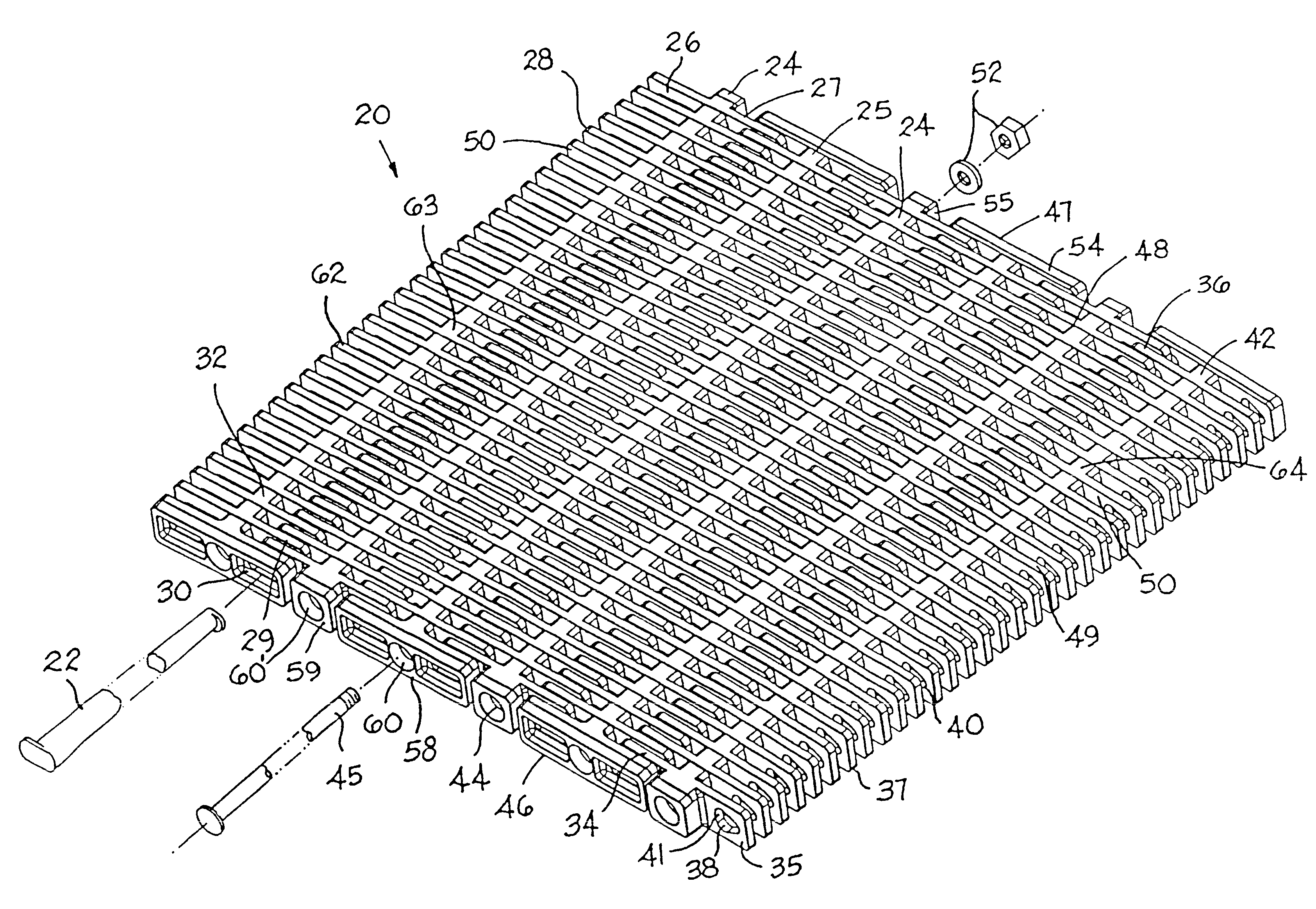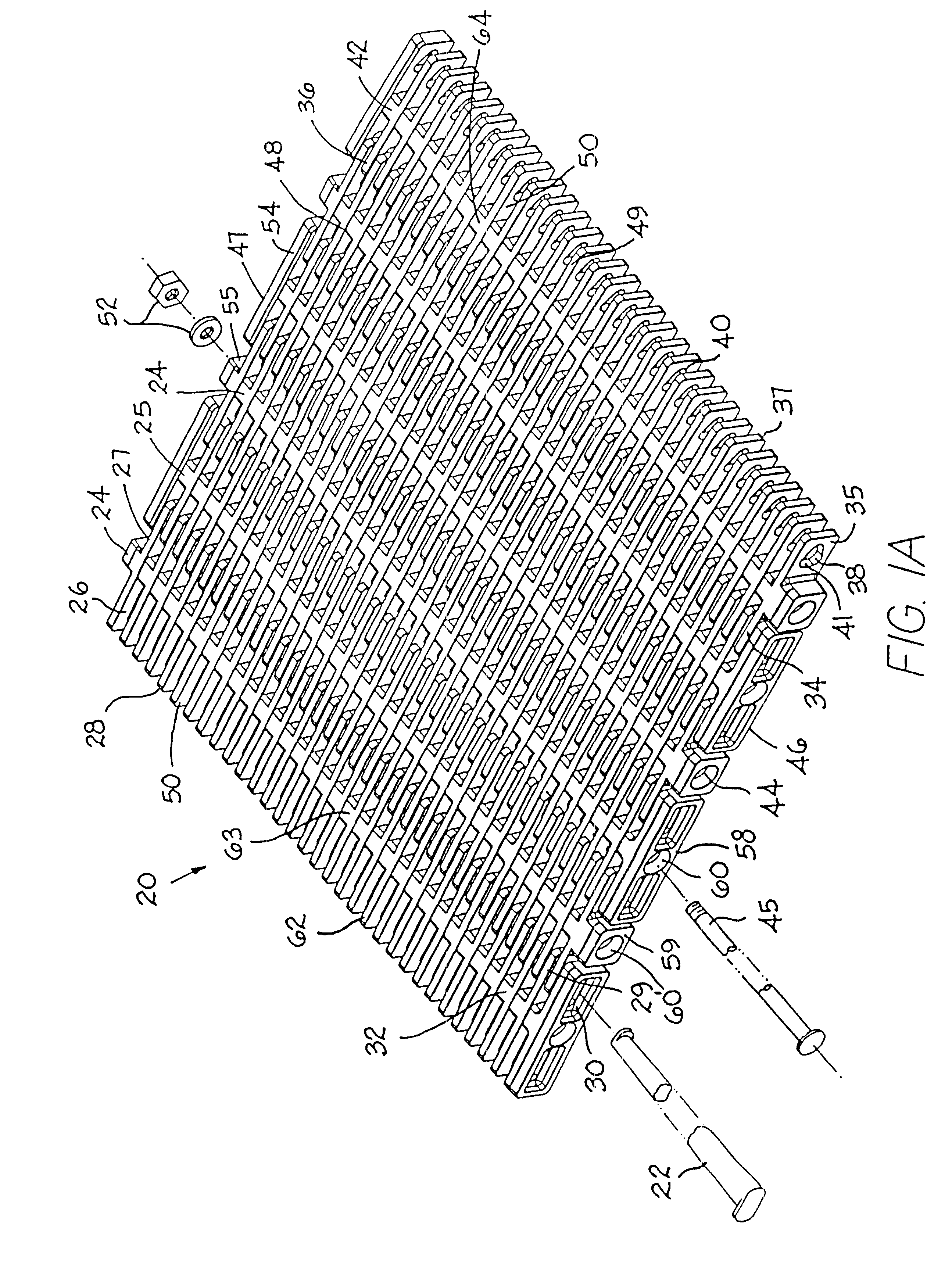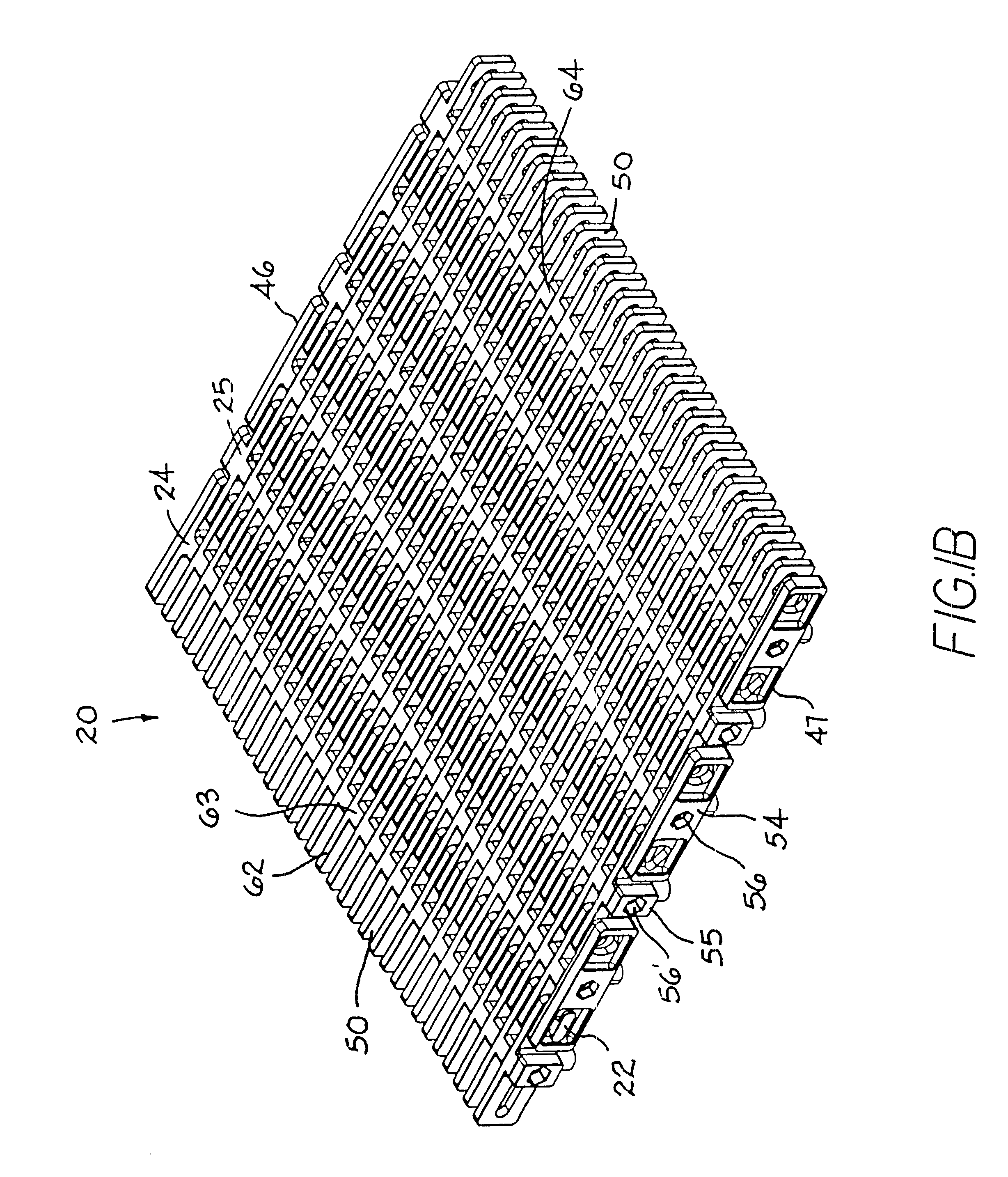Modular belt with tapered oblong hinge pins
a technology of hinge pins and modules, applied in conveyors, packaging, transportation and packaging, etc., can solve the problems of large differences in pull strength on straight lines, difficult molding of apertures, waste of belt strength to accommodate turns, etc., to avoid other shortcomings, avoid waste of belt strength, and avoid molding difficulties
- Summary
- Abstract
- Description
- Claims
- Application Information
AI Technical Summary
Benefits of technology
Problems solved by technology
Method used
Image
Examples
Embodiment Construction
Portions of an exemplary version of a radius belt 20 having features of the invention are shown negotiating a turn in FIG. 1A and a straight in FIG. 1B. The endless belt is composed of a succession of belt rows, preferably made of injection-molded plastic, connected end to end by pivot rods, or hinge pins 22. In the version shown, there are two styles of belt rows: a first row 24 and a second row 25. The first row comprises a first set 26 of hinge elements along a first end 28 of the row and a second set 27 of hinge elements along an opposite second end 29 of the row. An elongated slot 30 is formed in each of the first and second hinge elements of the first row. The slots at each end are axially aligned across the width of the belt and are elongated in the direction of belt travel. The first and second sets of hinge elements extend from a central portion 32 forming a transverse connecting member across the width of the row. The second row 25 comprises a first set 34 of hinge element...
PUM
 Login to View More
Login to View More Abstract
Description
Claims
Application Information
 Login to View More
Login to View More - R&D
- Intellectual Property
- Life Sciences
- Materials
- Tech Scout
- Unparalleled Data Quality
- Higher Quality Content
- 60% Fewer Hallucinations
Browse by: Latest US Patents, China's latest patents, Technical Efficacy Thesaurus, Application Domain, Technology Topic, Popular Technical Reports.
© 2025 PatSnap. All rights reserved.Legal|Privacy policy|Modern Slavery Act Transparency Statement|Sitemap|About US| Contact US: help@patsnap.com



